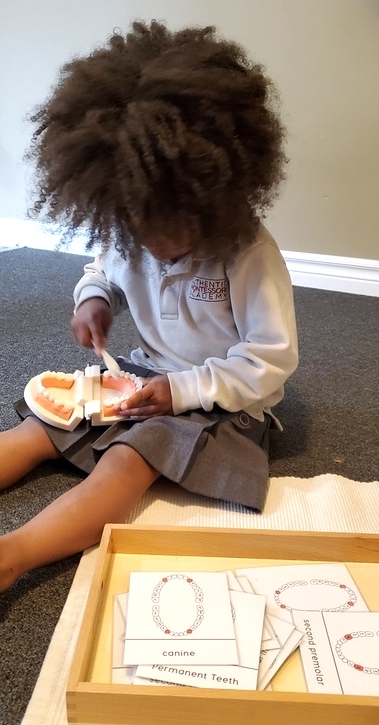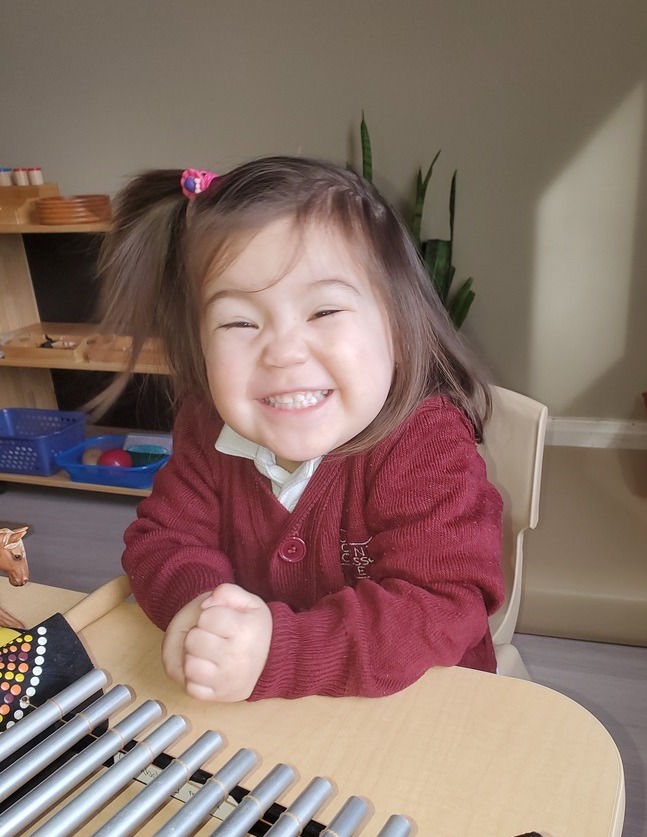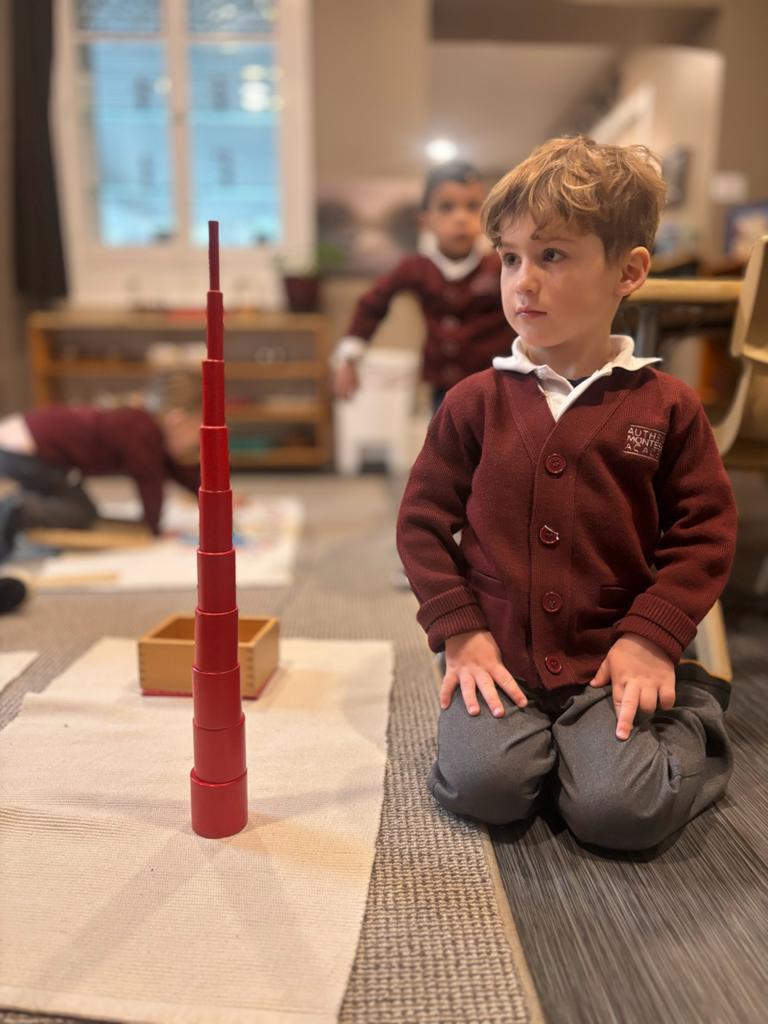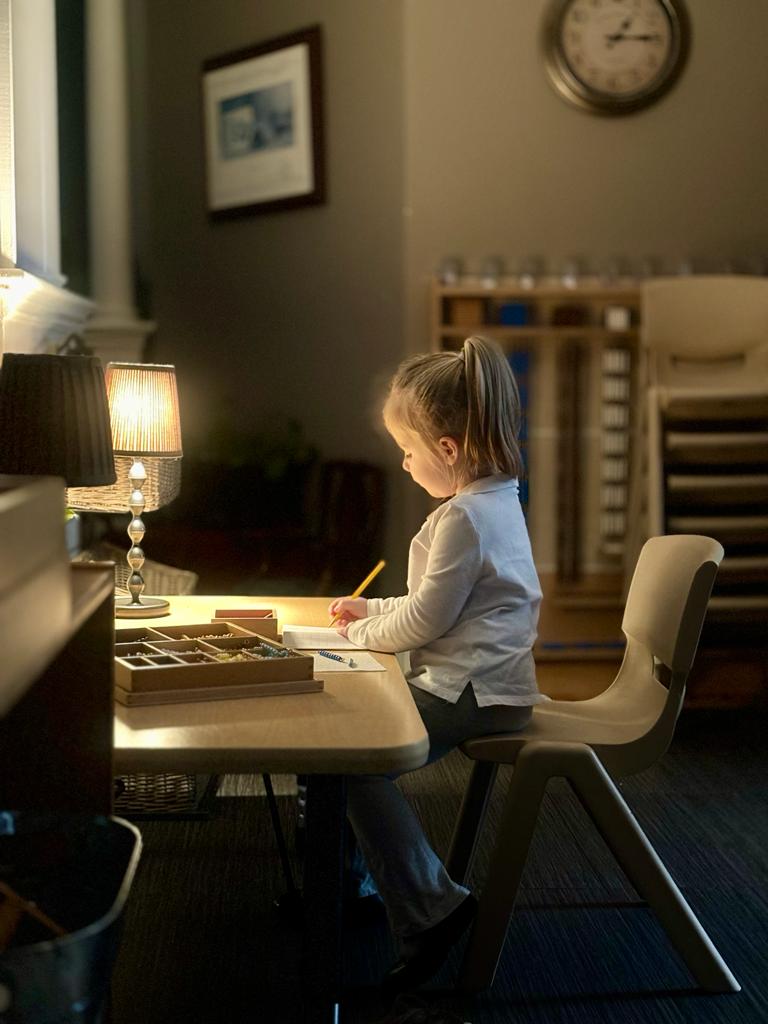Academic programming
The Montessori environment contains specially designed, manipulative materials for development that invite children to engage in learning activities of their own individual choice. Under the guidance of a trained teacher, children learn by making discoveries with the materials, cultivating concentration, motivation, self-discipline, and a love of learning.


Toddler and Pre-Casa Program (Ages 18 months to 2½ years)
“Nido” (Italian for “Nest”), which is represented in our schools’ logo, is what the Montessori Infant/Toddler program was originally referred to as.
Our Toddler Program serves children who are comfortably walking (approximately age eighteen months to age three) in a small and intimate group of ten children and two trained teachers. The environment conforms to the physical needs of the children, both in the size of the furnishings and in the opportunities for motor development. There is a lot of natural light, selected art placed low on the walls, and defined space to challenge coordination of movement.
There are five areas in the Toddler Environment – Practical Life, Sensorial, Language, Mathematics, and Culture.
Practical Life
Materials are designed to help the child adapt to life, to develop muscular coordination and to develop the ability to follow a sequence of activities. They lead to independence in care of oneself and the environment.The children utilize real objects which serve as a connection between the home and the school. Here, the child will always feel successful as there is no way to do an exercise wrong, increasing precision and exactness.
Sensorial
Materials are designed to allow the child to consciously classify the sense impressions that he/she has received since birth – and before. They allow the child to make finer and finer discriminations with their senses. Each piece of material isolates a quality they have experienced and gives them an opportunity to name it.
Language
Language underlies everything in the child’s life and in the classroom. The child is deeply interested in anything to do with language so they are constantly given opportunities to express themselves in language, in stories, poems, and in conversation. Children at this age are also working hard to expand their vocabulary so we should offer them a wide range of language experiences. At age four and a half to five or six, the child learns to write and read – a new way for them to express themselves. In our classroom, components of writing are prepared for indirectly so they can explode into writing, thinking that they have taught themselves.

Mathematic Materials
These materials are designed to allow the children to find points of reference in the mathematical world. These materials work with math in a very concrete way emphasizing numbers and the decimal system. All these branches of mathematics are integrated: arithmetic, geometry and preparation for algebra. The child is studying mathematics in a concrete, sensorial manner so that they are comfortable with it.
Culture
These lessons are closely allied with language lessons, yet they remain concrete and give the children a manual activity they can perform independently.
CASA Program (Ages 2½ – 6 years
Maria Montessori observed that all children learn according to natural, built-in, stages of development. Children under six years old are developing an identity or sense of self. They will often prefer to work individually. As the child gets older, they develop more of an interest in learning collaboratively. The Montessori Method respects these natural inclinations of the developing child. Children have the freedom to choose to work by themselves when they need to. Likewise, children can choose to work in groups and to help one another.


 Our classrooms adhere to these principles as they are bright, warm and inviting, and they allow children to develop independence in all areas according to his or her inner psychological directives. Classrooms are prepared with beauty and harmony; they are filled with plants, libraries, bright arrays of geometric solid forms, knobbed puzzle maps, coloured beads, nature tables and a science table including fossils and artifacts, as well as various specialized rods and blocks. Everything in the environment including furniture and materials is scaled to fit the physical dimensions of a preschooler’s body. Materials and activities are laid out in an orderly way on easily accessible open shelves that are at the children’s eye level allowing them to freely engage in any activity that appeals to their cognitive, physical, social or emotional needs.
Our classrooms adhere to these principles as they are bright, warm and inviting, and they allow children to develop independence in all areas according to his or her inner psychological directives. Classrooms are prepared with beauty and harmony; they are filled with plants, libraries, bright arrays of geometric solid forms, knobbed puzzle maps, coloured beads, nature tables and a science table including fossils and artifacts, as well as various specialized rods and blocks. Everything in the environment including furniture and materials is scaled to fit the physical dimensions of a preschooler’s body. Materials and activities are laid out in an orderly way on easily accessible open shelves that are at the children’s eye level allowing them to freely engage in any activity that appeals to their cognitive, physical, social or emotional needs.